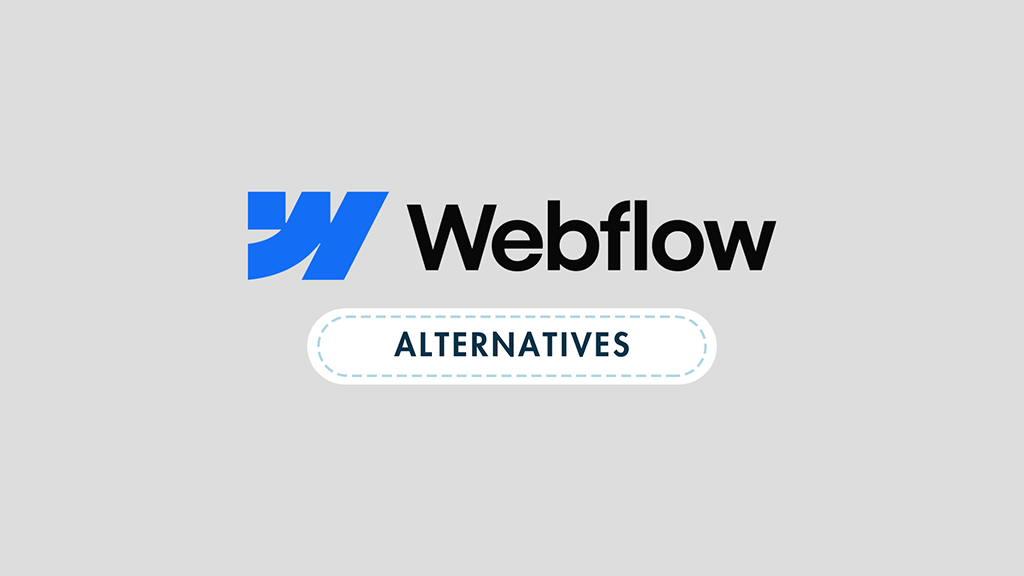
Webflow is a popular website builder, and for good reason too — it’s a highly flexible tool that lets you build genuinely unique websites with stunning animations. However, its learning curve can be steep, and there are more powerful solutions available for ecommerce. So, in this post, I highlight some key Webflow alternatives that you can consider.
1. Squarespace
For me, Squarespace is perhaps the most obvious alternative to Webflow.
Like Webflow, Squarespace places a big emphasis on aesthetics; its templates are extremely appealing from a visual point of view, and it gives you access to animation effects that you can add to your site.
(These effects are not remotely as sophisticated as the Webflow equivalents, but they nonetheless add a touch of class to your content, while being considerably easier to implement.)

The main advantages Squarespace has over Webflow include:
- Ease-of-use — Squarespace has a very clean, intuitive interface, and is much easier to use than Webflow.
- Bandwidth — while Webflow varies this according to plan type, you get unlimited bandwidth and storage on all Squarespace plans.
- Ecommerce features — Squarespace lets you sell more products; gives you more options for starting a dropshipping business; and lets you sell at point of sale (if based in the US).
Webflow is the better choice if you need complete control over your site, however.
It gives you more control over how your site appears on different devices; lets you edit animations to the nth degree; gives you more sophisticated data capture forms; and lets you export your code and host your site on any server.
Try Squarespace
👉 Squarespace free trial and discount
2. Wix
Wix is another obvious alternative to Webflow and a solution that generally offers users more ‘bang for the buck.’ Wix subscribers get a good mix of flexible content presentation tools and ecommerce features; and the platform’s learning curve is much gentler than Webflow’s.

The main advantages Wix has over Webflow involve its:
- ecommerce tools — they are considerably more developed, with more options available to users for dropshipping, point of sale (POS) and tax calculation.
- themes — Wix gives you a much larger selection of free, customizable templates to choose from.
- translation features — while creating multilingual sites with Webflow typically involves using a fairly expensive plugin, Weglot, you can translate your site into multiple languages with Wix for free.
However, unlike Wix’s, Webflow templates are fully responsive, meaning that they automatically adapt to display correctly on whatever device they’re being viewed on (mobile, tablet or desktop).
By contrast, Wix’s templates use an ‘adaptive design’ approach, which means that you’ll need to build slightly different versions of your site for mobile and desktop devices. While Wix does a pretty good job of creating these automatically for you, some separate tweaking of your site designs for mobile and desktop is usually necessary.
Google favors responsive websites too, so if you’re working in a very competitive niche, you may benefit from preferential treatment in search results by using Webflow.
For most users, this shouldn’t be a major concern — a good placement in search results relies on many factors, including thorough keyword research, strong content and high-quality backlinks. Sites built with Wix can definitely perform well in search results.
You can learn more about how Webflow and Wix compare in our full Webflow vs Wix comparison.
Try Wix
👉 How to start a Wix trial
3. Shopify
If your main aim behind building a website is to sell online, then Shopify is one of the best alternatives to Webflow (arguably the best).
As you might suspect — given its store-building focus — Shopify is packed full of ecommerce tools, and these are all much more sophisticated than the Webflow equivalents.
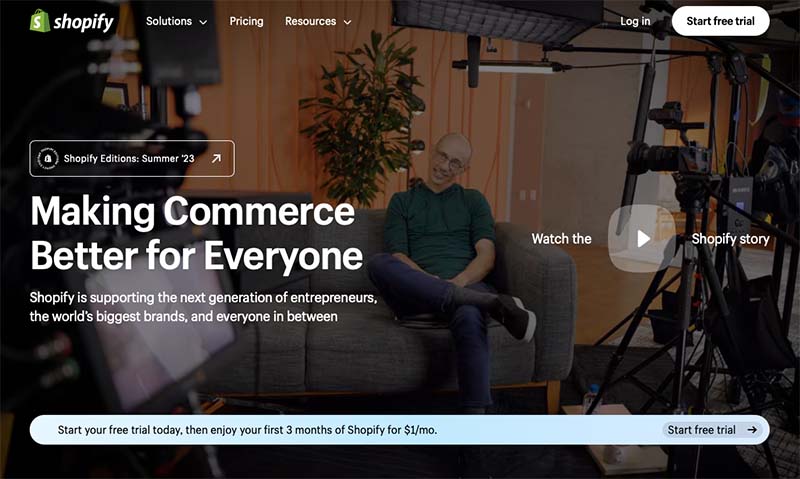
Shopify lets you sell products any way you like — whether that’s via an online store, at point of sale or via a huge range of dropshipping suppliers (as things stand, the only well-known dropshipping app that Webflow works with is Printful).
It also gives you advanced marketing tools and abandoned cart recovery features that you won’t find in Webflow.
In particular, Shopify is a much better solution for international selling than Webflow — unlike the latter, it facilitates end-to-end automatic currency conversion. It also gives you more sophisticated options for managing taxes and import duties.
And finally, Shopify’s huge library of apps (13,000+) lets you add a lot of additional ecommerce and marketing features to proceedings. Although Webflow also provides an app marketplace to its users, this only features native integrations for a small selection of apps.
Webflow arguably remains the better choice however for content-related applications — its drag and drop builder is much more flexible than Shopify’s; and unlike Shopify it gives you autosave, version history and backup features out of the box (getting these in Shopify will require purchase of apps).
Check out our Shopify vs Webflow comparison for more details on how both platforms stack up against each other.
Try Shopify
👉 Extendable Shopify free trial details
4. WordPress
There are two versions of WordPress available: hosted and self-hosted. The hosted version is, like Webflow, a browser-based product that gives you a range of built-in, easy to use website building features.
Either version of WordPress is better than Webflow if blogging is a key part of what you’re doing — WordPress is a best-in-class publishing tool, and lets you use your blog content in a huge number of imaginative ways.
(Webflow places limits on the number of blog posts you can create, which, if you’re a high-output blogger or publisher, could cause problems for you).
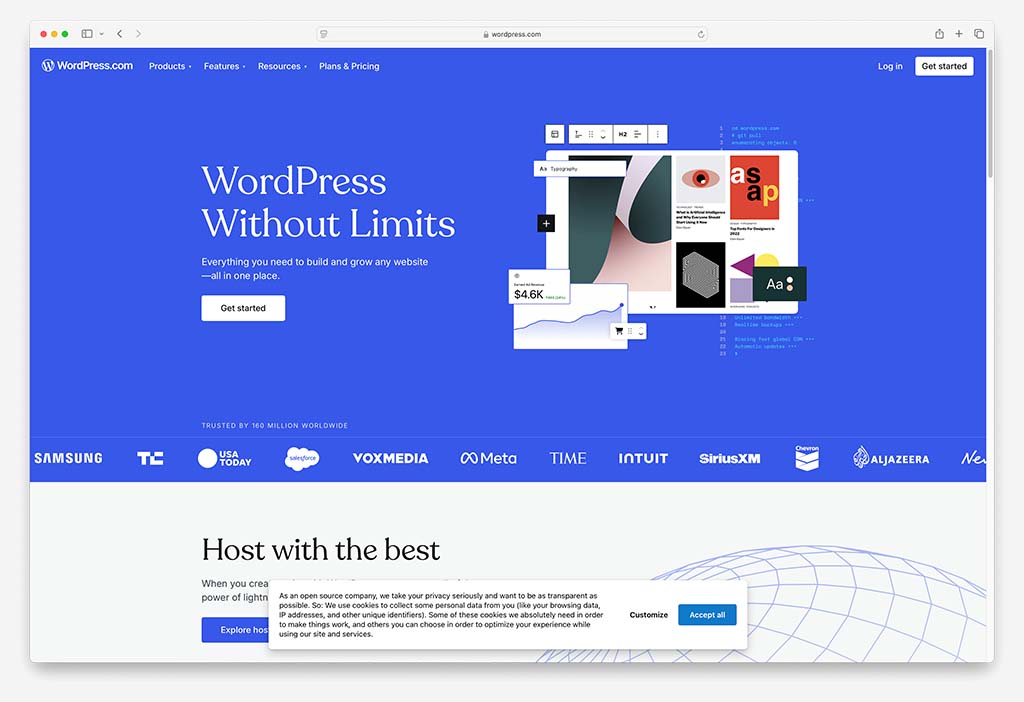
On the more expensive hosted WordPress plans, selling features are provided via WooCommerce, a well-specced ecommerce tool that gives you considerably more selling features than Webflow.
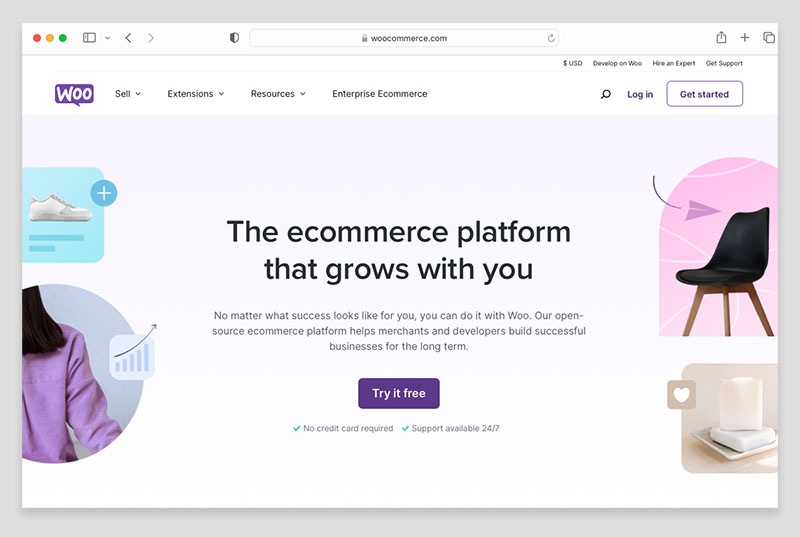
Merchants who are serious about selling online usually choose the self-hosted version of WordPress, however — an open-source version of the platform that you download for free and install on your own server (meaning that you’ll need to buy some hosting somewhere to run it).
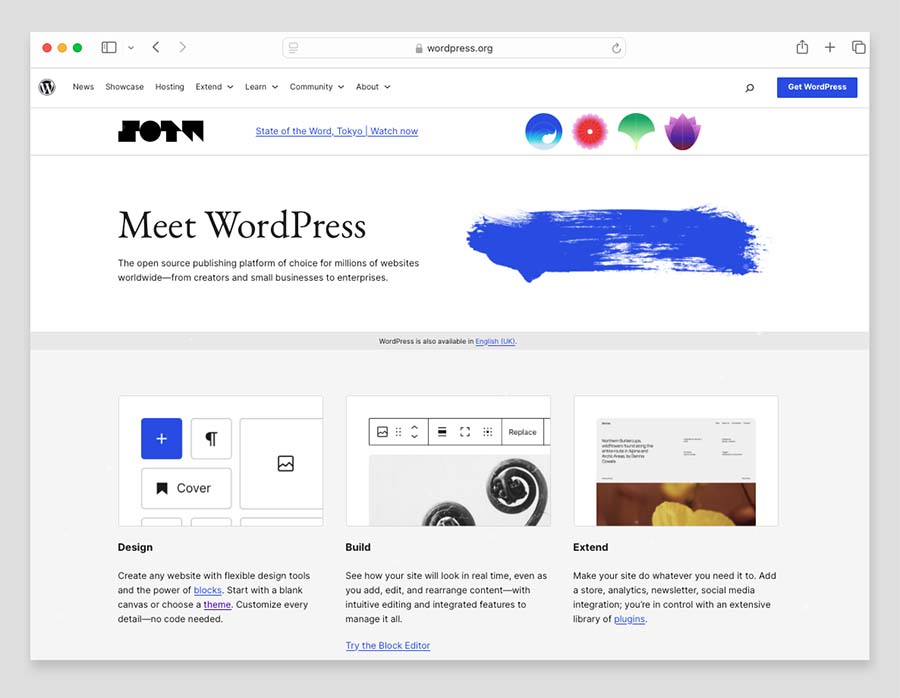
To be fair, Webflow is a more flexible website builder than most, and gives WordPress a good run for its money in the flexibility stakes — but with self-hosted WordPress, you have absolute control over everything.
With self-hosted WordPress, you can:
- choose the ecommerce tool that suits your needs best (WooCommerce, Ecwid, Easy Digital Downloads etc.)
- code any features you like into your site
- configure your SEO setup exactly the way you want it
- add SEO tools to your content management system (including plugins by Yoast SEO and Semrush)
- make use of a much wider range of themes and plugins than Webflow.
The disadvantage of using self-hosted WordPress over Webflow is that you’ll usually face a bit more more setup time and configuration (and there’s no customer support available to help you during this process).
And, if you are serious about getting the most out of WordPress from a PageSpeed and technical SEO perspective, there’s often expensive hosting involved and, depending on your technical skills, development work to pay for too.
And on top of that, regular maintenance and software updates are generally needed to keep a WordPress site secure (if these tasks are neglected, your WordPress site can become extremely vulnerable to being hacked).
You don’t really have to worry about any of that if using Webflow.
5. Square Online
Square Online started life as a point-of-sale (POS) solution for accepting in-person transactions.
But with the acquisition of the website building tool Weebly — whose technology the platform now incorporates — it has gradually evolved into a solution that lets you build websites and ecommerce stores too.
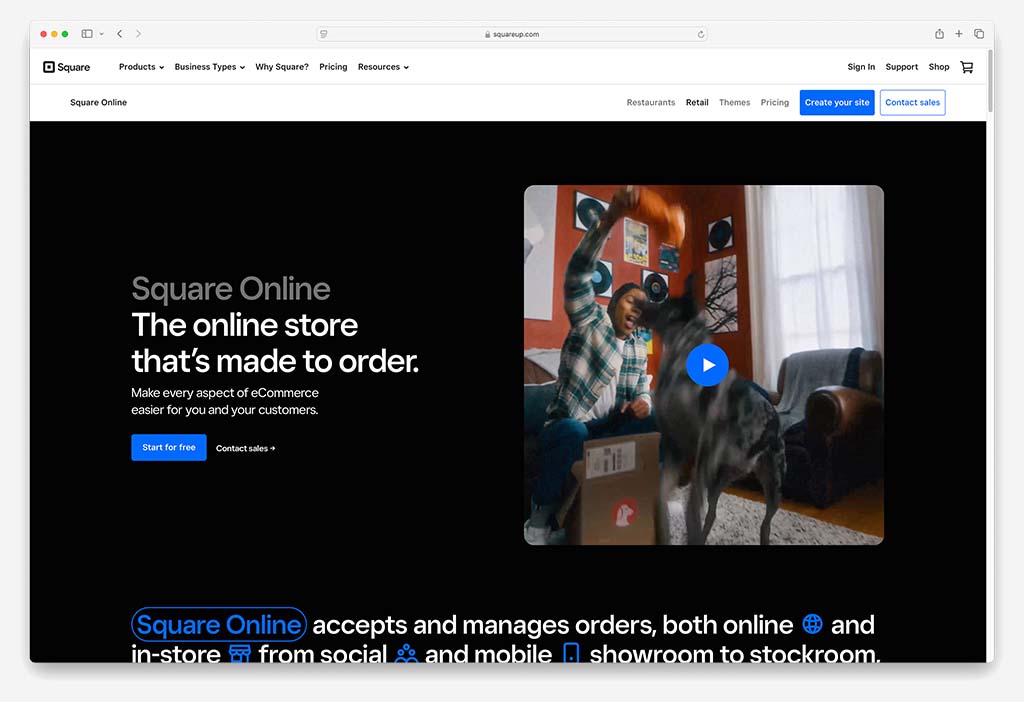
Square and Webflow are fairly closely matched in terms of basic quality, with the main edge that Square has over Webflow being ease-of-use; it’s a much simpler website building tool to use.
The main reason you might want to opt for Square over Webflow is if you need high-quality point of sale features — given its heritage, Square offers some very strong POS features that, as things stand, are unfortunately missing from Webflow.
It’s worth noting that Square places a particular focus on restaurant owners, and accordingly comes with special features that are designed to make running a food or drink business easier (i.e., table management, tipping and loyalty card functionality).
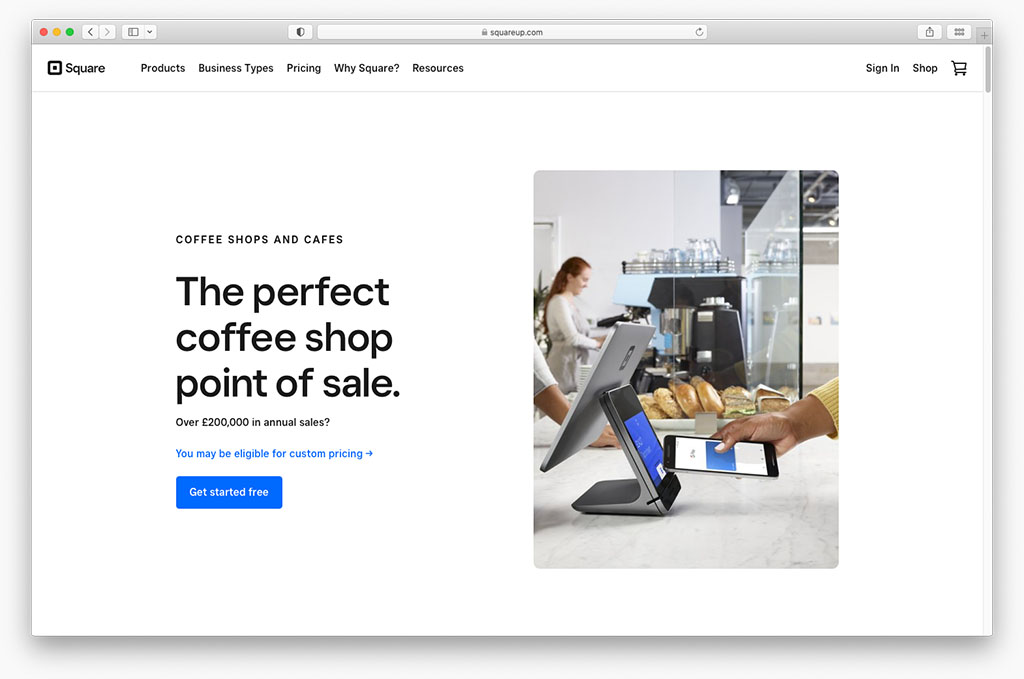
So, if you work in catering, you may find Square to be a more ‘natural’ fit than Webflow.
6. BigCommerce
BigCommerce can be a good alternative to Webflow.
Like its key rival Shopify (see above), BigCommerce is a platform that was designed with ecommerce 100% in mind — and accordingly, boasts a similar range of sophisticated selling tools that you won’t find in Webflow (POS, end-to-end multi-currency conversion, better tax calculation features, better ecommerce analytics, more payment gateways, more dropshipping apps and so on).
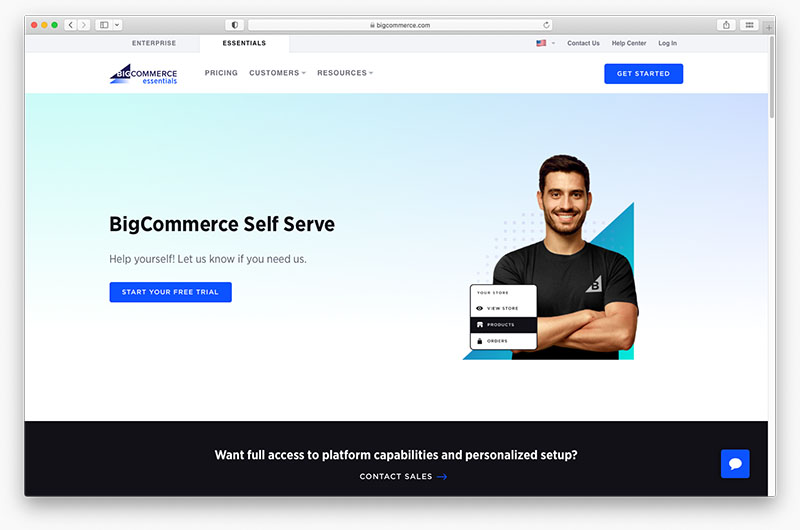
However, BigCommerce’s drag and drop editor is not as good as Webflow’s and its template range is considerably more limited. It is considerably easier to use than Webflow, however.
So like Shopify, BigCommerce can be a really strong alternative to Webflow — but only if your biggest focus is ecommerce. If your aim is to create a highly bespoke, content-heavy site and do some simple selling on the side, then Webflow remains a better choice.
7. Big Cartel
Big Cartel is a website and store building platform that was originally designed to facilitate sales of ‘creative’ products — music, paintings, jewellery etc. It retains this focus on artists and makers, but it is increasingly used by more ‘general’ types of small businesses too.
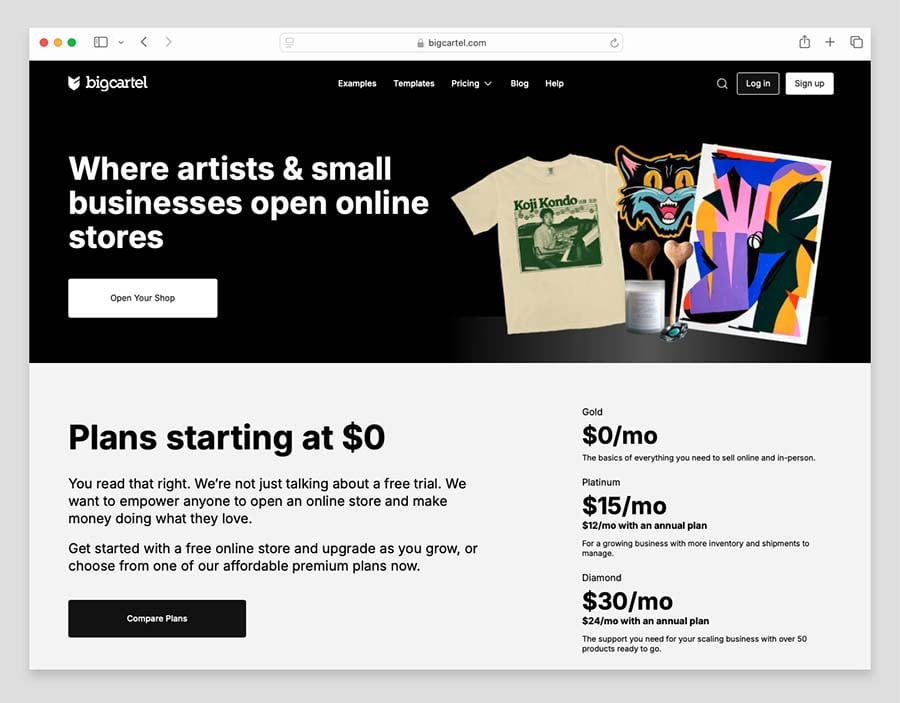
From a features perspective, Big Cartel is not as sophisticated as Webflow (particularly when it comes to content management and presentation and SEO).
It does however offer a few advantages over Webflow:
- It lets you sell a small number of products for free (up to 5) — Webflow always charges you to access selling features.
- It’s considerably cheaper than Webflow.
- It’s a lot easier to use.
Professional merchants will fare much better with a more sophisticated selling platform like Shopify or BigCommerce, but those on a low budget (especially creative types) will definitely appreciate the low-cost, no-frills nature of Big Cartel.
You can learn more about the platform in our Big Cartel review.
8. GoDaddy Website Builder
GoDaddy Website Builder is a popular website building platform that like Webflow gives you a decent amount of content management and ecommerce functionality out of the box.
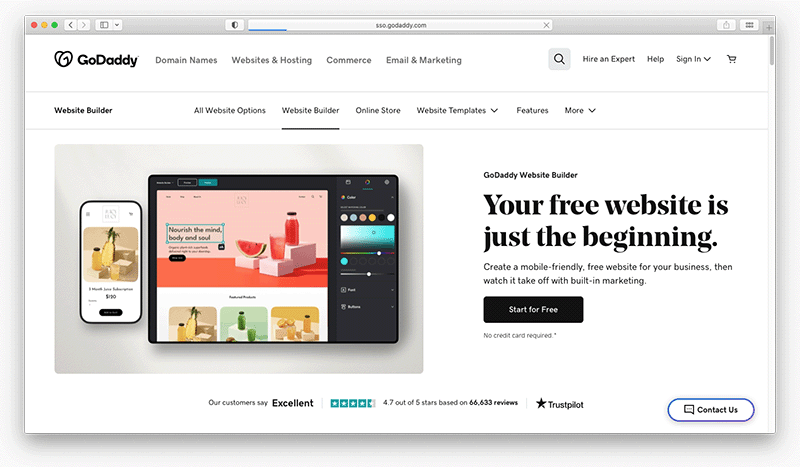
There are a couple of reasons why you might want to consider it instead of Webflow:
- It lets you sell larger digital files (up to 20GB in size — Webflow limits you to selling 250MB downloads).
- It bundles generous email marketing tools with its plans; Webflow doesn’t provide this feature at all (you can however, integrate Webflow easily enough with the likes of GetResponse, AWeber and Mailchimp).
The main reason for choosing Webflow over GoDaddy involves its more sophisticated content management and web design features — with Webflow’s being considerably more flexible than the GoDaddy equivalents.
(Some users will appreciate the fact that Webflow lets you export your site code for hosting on your own server too.)
We don’t yet have a direct Webflow vs GoDaddy comparison available, but our Wix vs GoDaddy and GoDaddy vs Shopify articles may be of relevance here.
9. Ecwid
Ecwid started life as a ‘widget’ for adding ecommerce to any site (hence its name: ‘Ec-wid’).
And that remains its key focus — Ecwid gives you a snippet of code that you insert on your site, which then adds a comprehensive range of selling features to it.
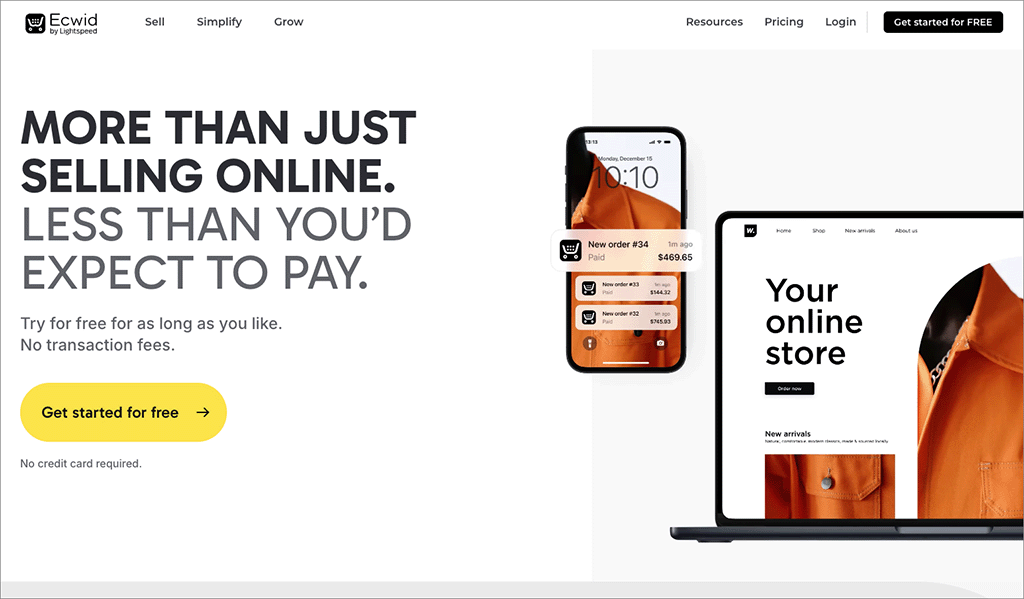
In recent years however, Ecwid has added a new ‘Instant Site’ feature that lets you create simple but attractive online stores that can live on a custom domain (yoursitename.com etc.).
Now, these ‘Instant Sites’ are by no means as fully-featured or sophisticated as Webflow sites (and they can only contain a few pages), but they are extraordinarily quick and easy to set up.
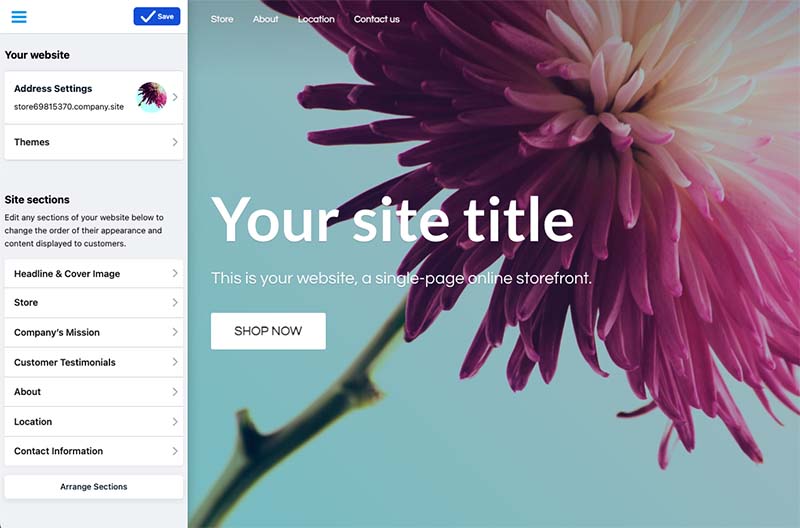
The main advantage that Ecwid provides over Webflow however involves pricing: the platform can actually be used entirely for free.
Ecwid’s free plan is basic though — it limits you to selling 5 just products, and only via your own ecommerce website (i.e., you can’t use it to sell on Facebook, Amazon etc.).
Overall, Ecwid can be a better choice than Webflow if…
- you are on a very low budget and really need a free selling option
- you just need a simple store — and one that you can set up quickly
- you are more interested in adding ecommerce to an existing website than creating a brand new one.
If your aim is to build a brand new (and large) standalone website though — particularly one that is focused on showcasing high quality content — Webflow is a much better option.
Check out our Ecwid review for more details on the platform, or watch the video below for a summary of its main pros and cons.
10. Canva
Given that Canva is generally considered to be a user-friendly graphic design tool rather than a website builder, I’ll admit that including it in our list of Webflow alternatives may seem a bit odd.
However, if your web design needs are simple, Canva can work out as a good Webflow alternative.
This is because in addition to letting you create visuals, animations and videos, Canva actually gives its users a website building feature.
Now, it has to be said that Canva’s website builder is an extremely simple tool that lets you build one-page sites only — but if all you need is a simple portfolio or resume site, it will do that for you nicely.
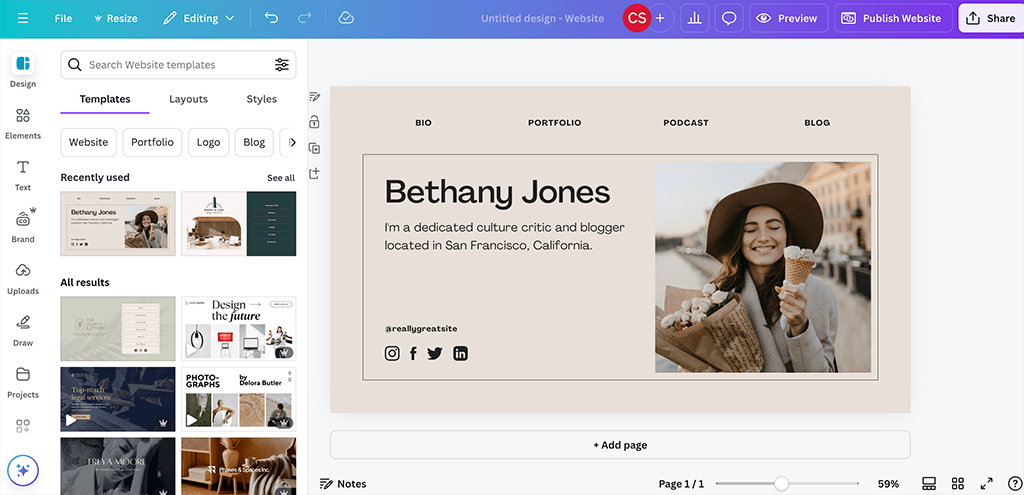
There are two key advantages of using Canva over Webflow. One is price: it’s much cheaper.
The other is the range of other features it gives you in addition to its web design tool — a presentation maker, video editor, drawing tool, document editor, free stock images etc.
These are all extremely useful tools for any business (and they’re very easy to use too). In essence, you get a lot of ‘added value’ from a Canva subscription that you won’t from a traditional website builder subscription.
However, if you plan on doing any online selling or blogging, or need a serious multi-page website, Webflow is definitely the better option.
📚 Related resources
Canva free trial
Canva review
Consider online marketplaces too (Amazon, Etsy and eBay)
If you’re considering Webflow because of its selling features, it might also be worth thinking about doing so via an online marketplace.
The main advantage of using online marketplaces instead of Webflow for ecommerce is that by doing so, you are gaining access to ready-made, large audiences of people who want to buy things.
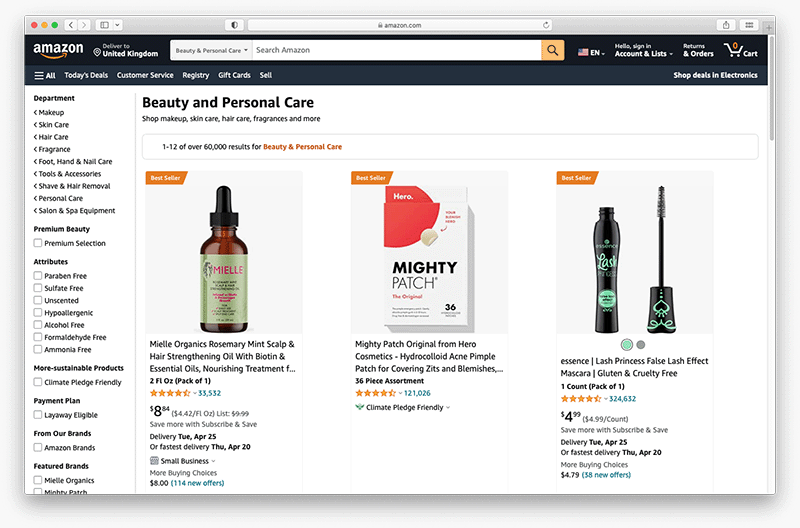
By contrast, when you set up a store with Webflow, its up to you to find an audience for it (via inbound marketing, blogging, SEO, online advertising etc.).
The other advantage of using online marketplaces instead of building a Webflow website is that you don’t have to worry that much about web design tasks — domain registration, graphic design, navigation design, UX, copywriting and so on.
When you use services like Amazon, eBay and Etsy, you’re just listing your products on an existing website — not creating an entirely new one.
💡Tip: Etsy offers a standalone store builder called ‘Pattern‘ — this integrates nicely with Etsy and can work well as a ‘best of both worlds’ solution for some merchants.
The disadvantage of using online marketplaces over solutions like Webflow is that you have much less control over your brand and less opportunities for content marketing; additionally, online marketplaces like the ones mentioned above aren’t great for dropshipping.
Some other Webflow alternatives
The above list of Webflow alternatives focusses on its main competitors. But there are lots of other website builders available, and some other Webflow competitors that you might wish to investigate are as follows:
- ClickFunnels
- Duda
- Gater (by HostGater)
- Google Sites
- IONOS
- Jimdo
- Pixpa
- Strikingly
- Volusion
- Webnode
If you have any questions about Webflow alternatives, just leave them in the comments.
While you’re here, download our free ecommerce e-kit
For a limited time, we’re offering our readers some excellent free tools. Sign up free to immediately receive:
- our e-book on how to start a Shopify store
- our online store comparison chart
- a downloadable cheatsheet on how to create an online store
- our SEO, blogging and ‘how to start a business’ cheatsheets
- extended free trials and discount codes for essential business apps
- our latest tips on ecommerce and growing a business
Webflow alternatives FAQ
Below you’ll find some frequently asked questions about competitors to Webflow.
Is there a free alternative to Webflow?
There are quite a few free alternatives to Webflow — popular hosted alternatives include Wix, Big Cartel and Ecwid. The free versions of all these platforms are very basic however, and in the case of Wix, you’ll have to live with a lot of prominent advertising if you use its free version. Self-hosted WordPress is also technically free, although you’ll need to buy hosting in order to use it.
Do professional web designers use Webflow?
Yes — because Webflow allows you to create very bespoke websites and export your site code easily, it’s a popular platform choice amongst professional designers. At time of writing, there are 413,000 live sites that have been built using the Webflow platform.
Is Webflow good for SEO?
Yes — Webflow’s SEO features are strong. The platform gives you control over all the key SEO components of your site, built-in SSL and fast-loading sites (thanks to a CDN comprised of over 100 data centers).
Is Webflow easy for beginners?
In on our tests, we found that Webflow has a relatively steep learning curve by comparison to competing solutions. Matters are improved however by the excellent range of support materials available for Webflow, not least its excellent ‘Webflow University’ resource.
Related resources: Shopify alternatives, Squarespace alternatives, Wix alternatives, Webflow review
No comments